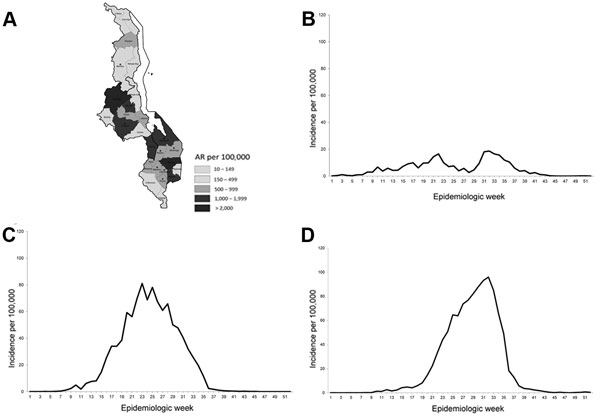Volume 19, Number 2—February 2013
Synopsis
Lessons and Challenges for Measles Control from Unexpected Large Outbreak, Malawi
Figure 2

Figure 2. . Measles cumulative attack rates (ARs) by district and weekly incidence, in Malawi, 2010. A) Malawi. The white area is Malawi Lake. Asterisks indicate districts in which children were vaccinated. B) Northern Region. C) Southern Region. D) Central Region.
Page created: January 22, 2013
Page updated: January 22, 2013
Page reviewed: January 22, 2013
The conclusions, findings, and opinions expressed by authors contributing to this journal do not necessarily reflect the official position of the U.S. Department of Health and Human Services, the Public Health Service, the Centers for Disease Control and Prevention, or the authors' affiliated institutions. Use of trade names is for identification only and does not imply endorsement by any of the groups named above.